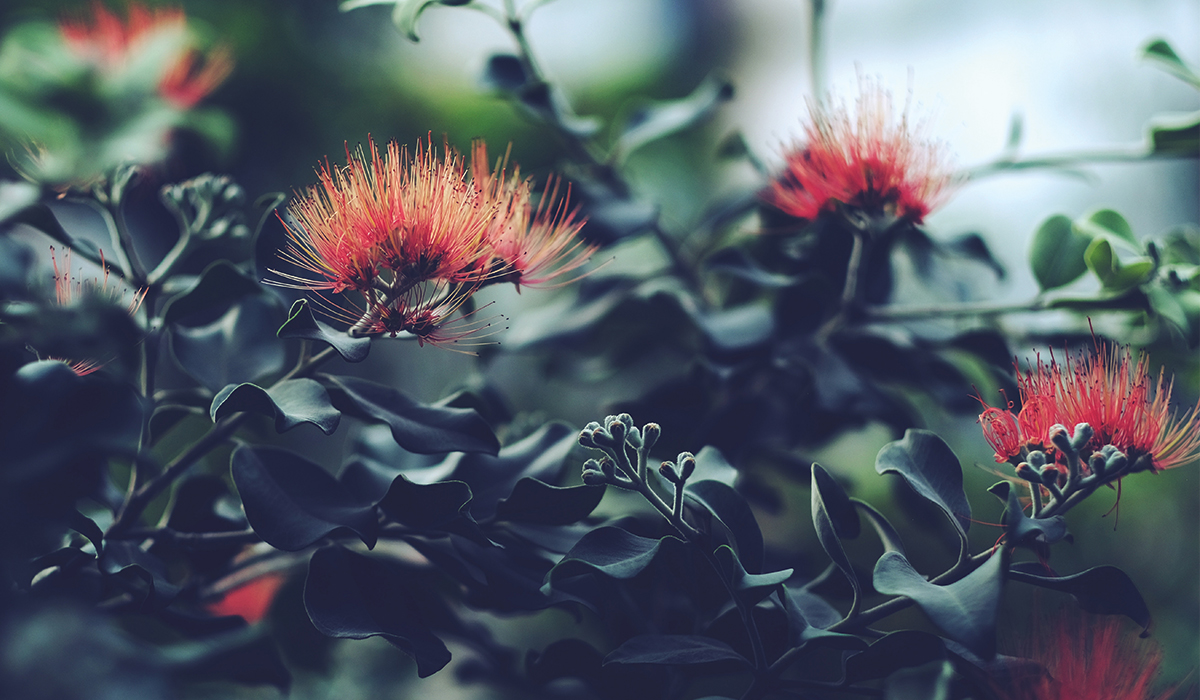Embracing Grief, Embracing Joy

During spring we bask in the sunlight and marvel at the budding of colorful new life all around us. It’s worth remembering, though, that that new life is only possible after the death and barrenness of winter. Here, Mandy Hughes reflects on that intimate connection between life and death, and on the belief that our capacity for joy is powerfully related to our capacity for grief. This post originally appeared at mandyhughescoaching.com.
One of my favorite things about living in Oklahoma is that spring comes early, bringing beautiful blossoming trees. I’m amazed how quickly trees can come alive: in just a few days, branches transform from barren to budding to fully-in-bloom. With their brazen display, these trees remind me to hope—because apparently no matter how severe the world seems, life can still make a surprisingly grand entrance. What’s more, these trees remind me to rejoice, and to do so with abandon—because apparently this simple truth is worth celebrating:
It’s good to be alive.
“Apparently no matter how severe the world seems, life can still make a surprisingly grand entrance.”
Last week the snow fountain weeping cherry tree in my front yard started waking up. This tree’s long, drooping branches dressed in white blossoms are one of my favorite sights of the season, but also one of the shortest-lived. Knowing the snow fountain’s blooms wouldn’t last long, I paid close attention over the days of their unfolding, awed that so much beauty could appear so quickly, and wondering how I could possibly savor it enough before it passed away. The day my tree reached full bloom, I spent some time sitting beside it, watching as bees danced from one flower to another. The bees seemed as eager as I was to soak up the sweetness—but I imagined they were not so preoccupied with the thought that this loveliness would fade too soon. It’s then I remembered:
My joy and my grief are the closest of friends.
Maybe that’s why, however much I look for joy, I hardly know what to do with it once it arrives. When I find something truly worth celebrating, it’s easy to become distracted by how much I stand to lose. It’s hard to embrace what I cannot hold onto forever.
Strange as it may seem, our ability to welcome joy is deeply connected to our willingness to enter grief. Until we contend with the places in our stories that hold deep sorrow, we will either hold too tightly or too loosely to pleasure: too tightly when we deny its end, trying desperately to make the present stand still instead of letting it breathe; too loosely when we refuse to be impacted by what we know is temporal, choosing instead some brand of stoic cynicism (“This isn’t so great, really”) or evasive optimism (“I’ll find something just as great tomorrow”). Until we contend with the places in our pasts that bear some form of death, we will remain too preoccupied with the loss of tomorrow to live in the joy of today.
But here’s the good news about grief: As we grow our capacity to enter sorrow, our fear begins to lose its power. The less we fear death, the more we embrace life. The freer we are to grieve, the freer we are to rejoice. And as we enter the depths of both our grief and our joy, the lines and spaces between the two get thinner and smaller, until we dance as Rumi tells us to: bloody or broken or fighting or free.*
As we enter the depths of both our grief and our joy, the lines and spaces between the two get thinner and smaller.
A couple days ago, the flowers on my weeping cherry tree started dropping their petals, and already most of them have been replaced by small green leaves. While I know this next phase will be lovely, too, I’m sad to see the flowers go. Yet here’s something wonderful: my sense of loss has actually enhanced my appreciation for the beauty of those flowers. I’m grateful that they came at all, and I’m grateful I was here when they did. They showed me what it looks like to rejoice right now, since this simple truth is so worth celebrating:
It’s good to be alive.
*This is a reference to one of Rumi’s poems, which can be found in The Essential Rumi (translated by Coleman Barks) under its first line, “Dance, when you’re broken open.”
